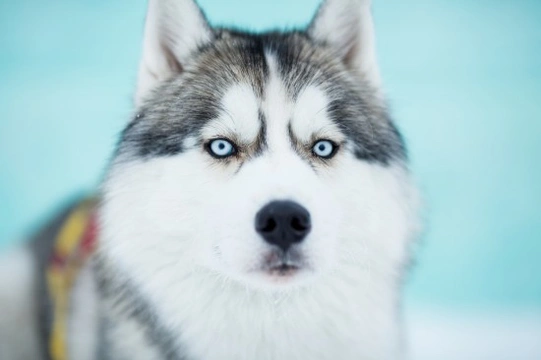
How closely related are the Siberian Husky and the wolf?
The Siberian Husky is a very distinctive looking dog, with their thousand yard stare, thick, heavy coats, pointed ears and alert posture. They are certainly one of the dog breeds that appear very similar physically to the wolf, and along with other dogs that contain Husky breeding (Such as the Northern Inuit Dog) they are commonly used to portray the role of wolves in films and on TV shows. Many people who are not familiar with dogs at all often assume that Huskies actually are wolves, or that they at least have a very recent history of cross breeding with wolves, and it is easy to see why!
If you are wondering what the truth of the matter is, and exactly how closely related Huskies are to wolves, read on to find out more about their common ancestry and the similarities and differences that they posses.
Siberian Husky origins
As the name suggests, the Siberian Husky originates from Siberia, Russia’s cold, frozen lands. The breed as we know it today was originally developed by the Chukchi people, native to Siberia, for use as sled dogs. This meant that the dogs could be used to pull sleds over very long distances without tiring, regardless of how cold the weather was or how challenging the journey.
Siberian Huskies were first imported to North America and other parts of the world in large numbers during the early part of the 20th Century, where they garnered a lot of attention for their prowess at pulling sleds, and were consequently cross-bred with many other breeds in the mission to produce the perfect sled dog. The American Kennel Club considers all sled dogs to have some relation to or Siberian Husky ancestry in its current form.
How old is the Siberian Husky breed?
When you look at the physical differences between different dog breeds, you could be forgiven for thinking that some of them are so different that they can only be very distantly related; for instance, the little Chihuahua shares very few physical traits with say, the Newfoundland dog.
However, all dog breeds worldwide actually share 99% of their genes, and just 1% of the genes within any breed will be different to any other. Since the advent of DNA analysis and our better understanding of the role of genes as the building blocks of life, a lot of research has been undertaken into tracing the ancient history of dogs of all types, and identifying their historical origins.
As a result of this, the Siberian Husky (along with some other breeds including the Shar-Pei and the Basenji) was found to have diverged from their wild ancestry and begun evolving far earlier than some other modern breeds, making them some of the most ancient recognised unique breeds of dog.
Their isolation from other dog types that they might potentially have crossed with also meant that breeds such as the Siberian Husky remain today in their present form much more similar to their ancestors than other breeds do, and so, remain closer to the ultimate original canine ancestor: the wolf.
The relationship between the wolf and the Siberian Husky
Regardless of what part of the world you look at the local wolf population and native dog population, any given dog breed remains genetically more similar to literally any other dog breed than they do to the wolf. Up until some very modern research, it was assumed that all dog breeds descended from wolves, but it is now thought possible that rather than having descended from wolves per se, wolves and dogs share another common ancestor, from which they both evolved. This common ancestor is unknown and now extinct, but it is thought that the main key divergence between the wolf and the dog is the presence of one particular gene, which allows dogs to digest starch, something that wolves are unable to do.
This means that wolves are obligate carnivores, while dogs are omnivores, and can eat a wide variety of foodstuffs.
Huskies are not wolves!
While the Siberian Husky undoubtedly looks very similar to the grey wolf and is likely the closest approximation you will see to a wolf outside of a zoo, the Husky is indeed a real dog, and not a wolf in dog’s clothing!
While the Husky retains a strong prey drive, high levels of independence and a distinct pack mentality, they are very much dogs, as is attested by their long history of living and working beside people. The Husky can dwell happily within a domestic home, bond with their family, and understand and respond to commands and training, all things that the wolf cannot do. Huskies retain loyalty to their human pack and any other dogs that they live with, and are not somehow the “missing link” or a semi-tame bridge between dog and wolf.



